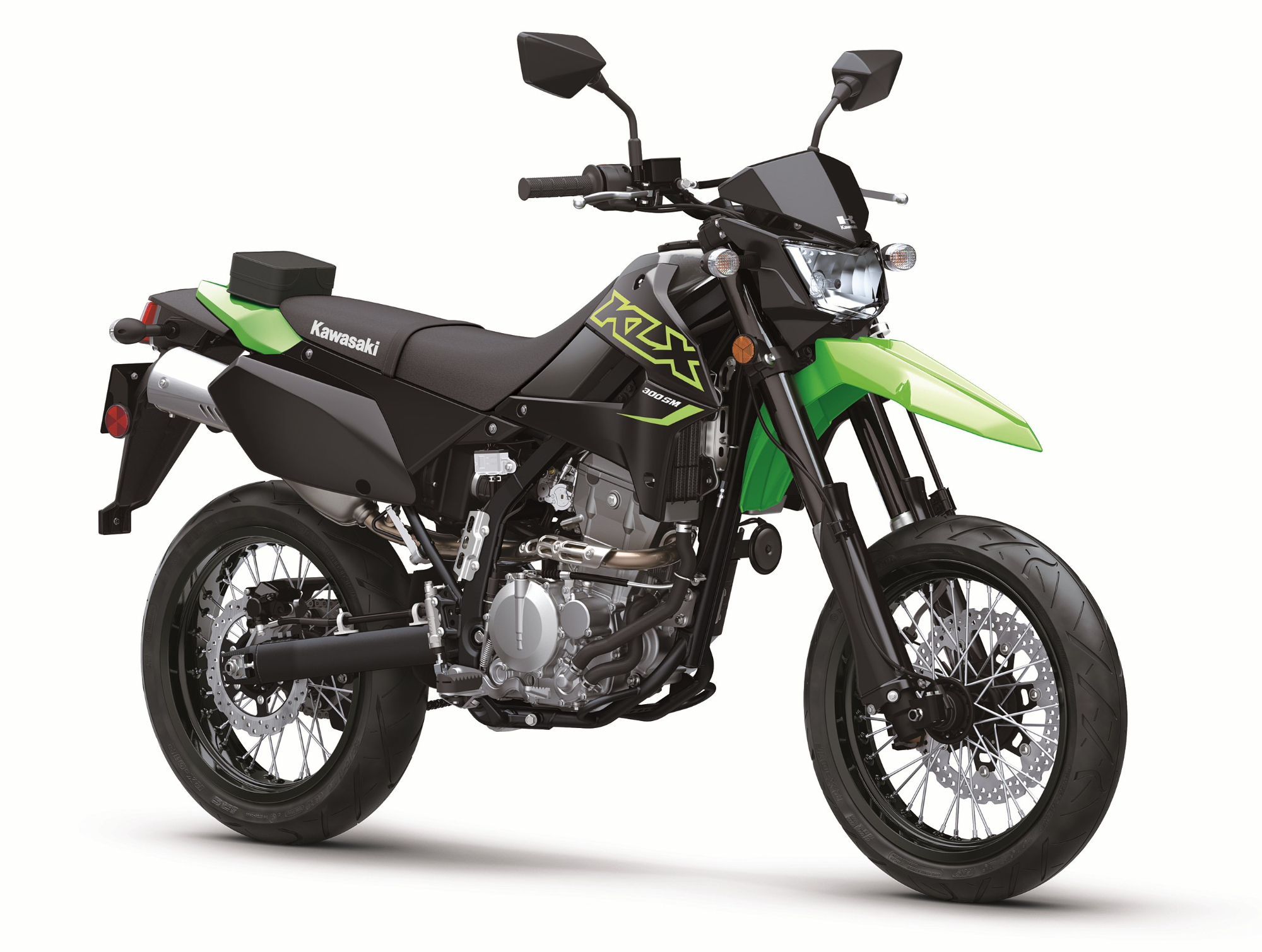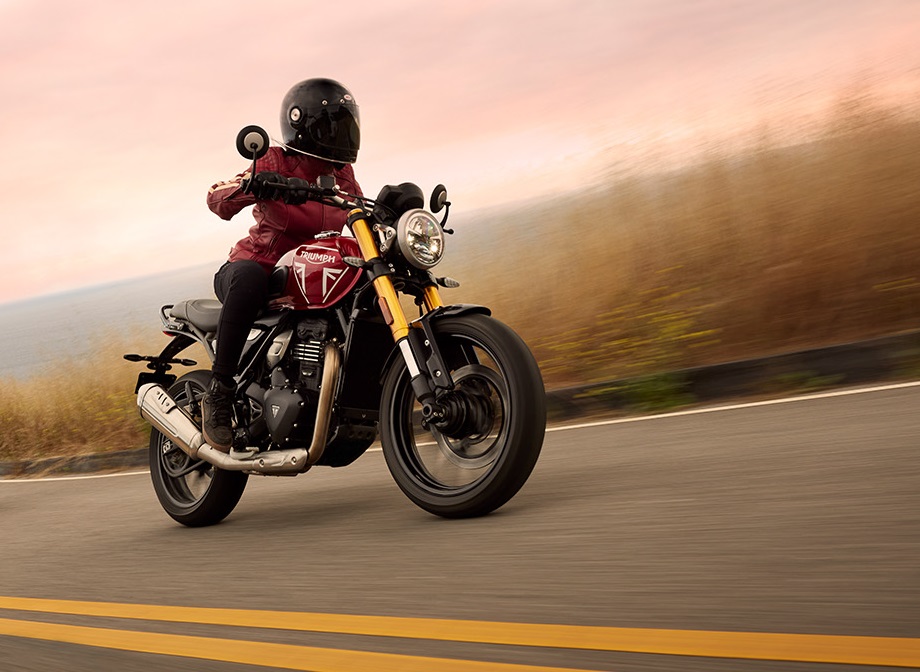A few years ago over at RevZilla, I wrote an opinion piece suggesting that a small dual-sport, despite being built to take on the countryside, just might be the best motorcycle for urban transportation. Nimble and narrow for squeezing through traffic, plenty of suspension travel for soaking up the potholes of urban decay, cheap to operate, and difficult to damage. Though really, what I always thought would be the perfect choice for all my local, in-town transportation, was the dual-sport’s first cousin, a supermoto. A supermoto provides the advantages of the dual-sport while being optimized for asphalt. Perfect for urban sorties.
Despite thinking that way for years, I’ve never bought one. Why is that? Others might look at the situation and explain it by saying, “Lance, you’re too damn cheap.” That’s an argument about which I can’t muster much in the way of moral outrage or rational refutation. Still, I prefer to characterize the situation as “Supermotos are too damn expensive!”
I expect some motorcycles to be expensive beyond the cold, hard accounting of rational spec-sheet examination. A Harley-Davidson Road Glide CVO, because of exclusivity, or a Ducati Panigale V4 R because of sheer capability, will command a higher price, enhanced even more because some people (I’m definitely not one of them) believe that the name on the tank confers additional status and therefore value. But supermotos don’t have any of that. A small subset of motorcyclists love them and think they’re cool, but they’re not going to win you many admiring glances, if you care about such things (again, I’m not one who does). If non-motorcyclists look at all, it will probably be just to wonder why you have that funny small front wheel on your “dirt bike.”
I was working at the AMA when the “supermotard” fad came over from Europe and the Supermoto professional racing series was launched. The series drew the broadest diversity of talent in motorcycling, from the roadracing Bostrom brothers to former motocrosser (by way of Indycar) Jeff Ward, and I thought accessible, downtown races would make the series a huge hit. Oh, how wrong I was. And how quickly the tiny burst of interest in supermoto fizzled in the United States. The manufacturers never even had time to bring “street tards” to market, which was lucky for them, because the ones that did come to market flopped.

The Kawasaki KLX300SM looks like fun, but why does a new 2024 model cost $1,200 more than a better equipped Kawasaki Z400? Kawasaki photo.
Setting aside the “ready to race” KTMs with race-level maintenance schedules and high-strung natures, there are really only three Japanese supermotos on the market today, which is one or two more than I even thought possible at this point. The Suzuki DR-Z400SM soldiers on, unchanged for years, and derived from the still-carbureted dual-sport DR-Z400S that has soldiered on unchanged for even more years. Then, to my great surprise, Kawasaki came out with the KLX300SM, an update of the sales flop KLX250SF, and the KLX230SM. (I’ll set aside the latter, because while it offers supermoto style, it provides very little in the way of sound or fury. The street tard of my imagination doesn’t need a lot of power, but it needs more than this.)
But look at the prices. Kawasaki wants $6,599 for a 2024 KLX300SM. That’s $400 more than the dual-sport version, the KLX300. Sure, there are a few differences, such as suspension internals, but I don’t think any of the parts on the supermoto are more expensive than the corresponding parts on the dual-sport, except for the bigger front brake rotor and caliper. The supermoto stacks up even worse against Kawasaki’s more powerful Z400, which also comes with anti-lock brakes that aren’t available on the KLX300SM, and costs $5,399, a full $1,200 less than the supermoto. Why?
Same over at Suzuki. The DR-Z400SM, outdated tech and unchanged features and all, costs a not-insignificant $7,899. That’s $700 more than the dual-sport version, which has also been around in basically the same form since my hair had no gray (that’s a long time, folks). It’s also $500 more than a more versatile Suzuki SV650 and even $50 more than an SV650 with ABS. Again: Why? What am I really getting for that price premium?

It’s not as light as a supermoto, but something like the forthcoming Triumph Speed 400 is at least as versatile, provides similar performance, and is arguably better to look at. Triumph photo.
Sure, the KLX300SM supermoto is significantly lighter than the Z400, for example, and I appreciate light weight far more than most (and more so with every passing year of aging). But still, I think about the features the two Kawasakis offer, the components that go into them, and the missions they’re capable of completing and I can’t think of a single reason for the SM to cost more money. Then I look at something like the Triumph Speed 400 unveiled yesterday or the Husqvarna Svartpilen 401 and I consider the virtues of a motorcycle that would function just as well (better in some ways, less in others) overall and would actually be fun to look at, not just interesting to look at.
I’ve only been able to come up with one theory for why supermotos are priced higher than similar motorcycles in the same manufacturer’s lineup. It’s Econ 101 stuff, I guess. These are niche products. Few people in the U.S. market want to buy a supermoto. But the few who do are real enthusiasts for the format. It’s exactly what they want. So they’re willing to pay more. Supply and demand. Demand is limited, but supply is even more limited, because there are few options available.
I’ve looked at a couple of used KLX300SMs for sale but they cost as much as similarly capable new bikes. Actually, the most enticing supermoto-style bike I’ve ridden is the Zero FXS electric motorcycle, which I took for a demo ride. I mean, since I’m looking at the supermoto as a way to play a bit role in my lineup, for local transportation only, the FXS’s biggest drawback, limited range, is not so important. But its next biggest drawback is the same old problem: It’s expensive.
So maybe I’m destined never to have the supermoto I’ve been imagining for the better part of two decades as a role actor in my garage.
